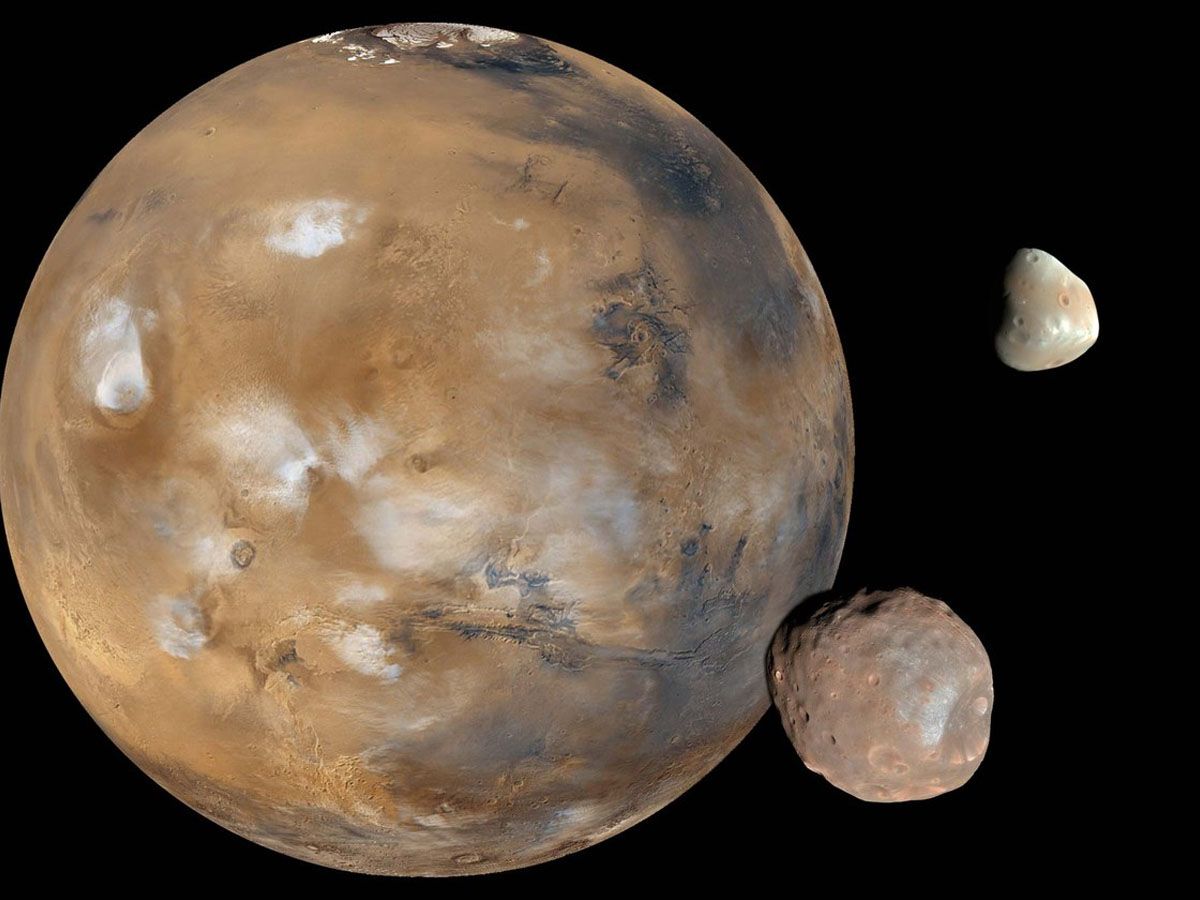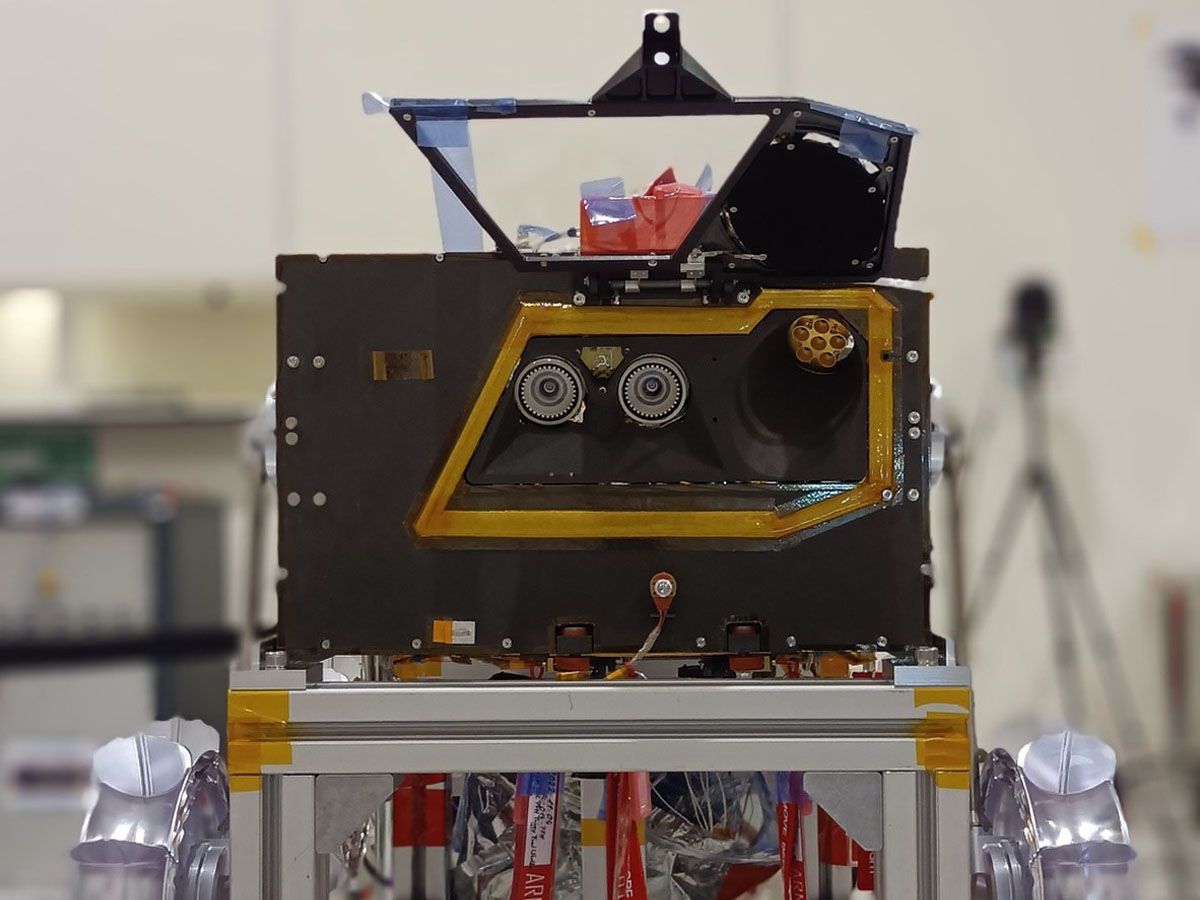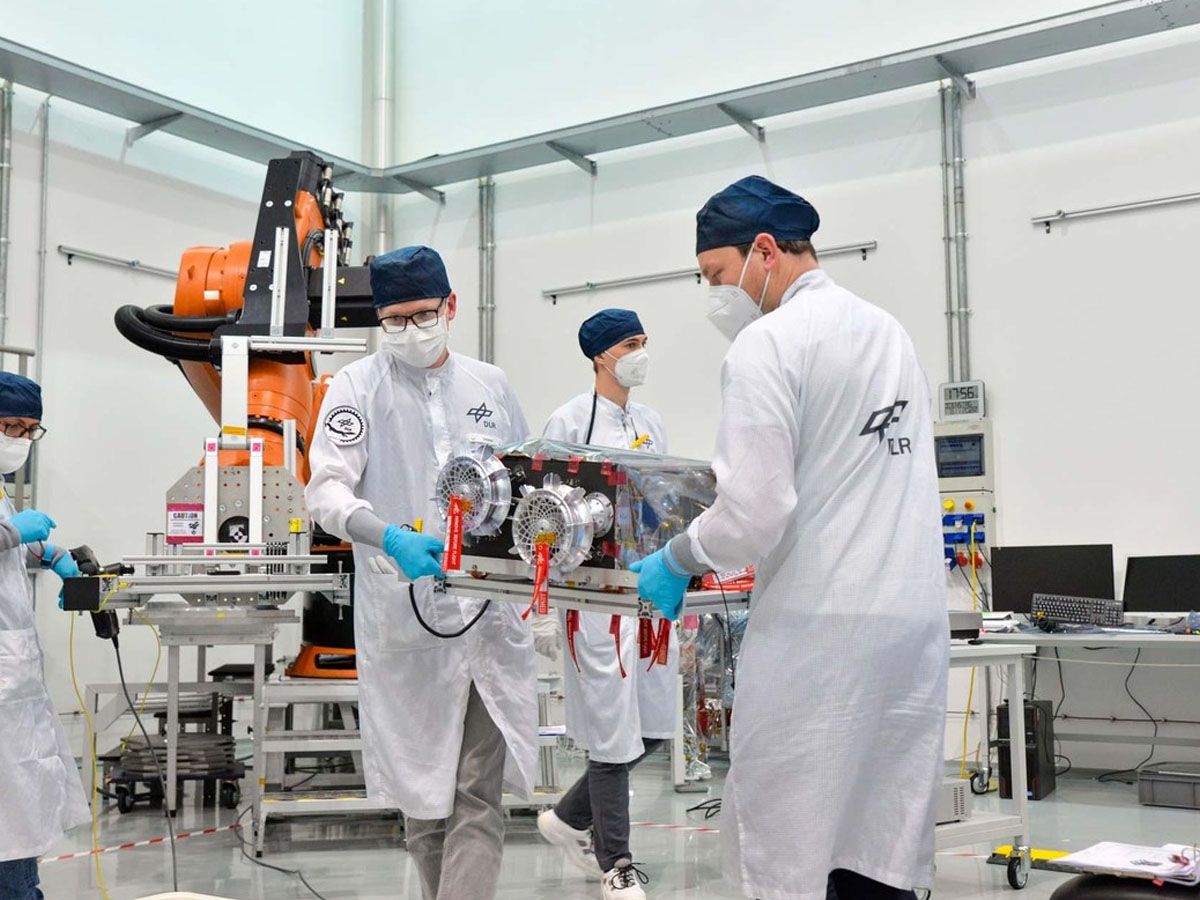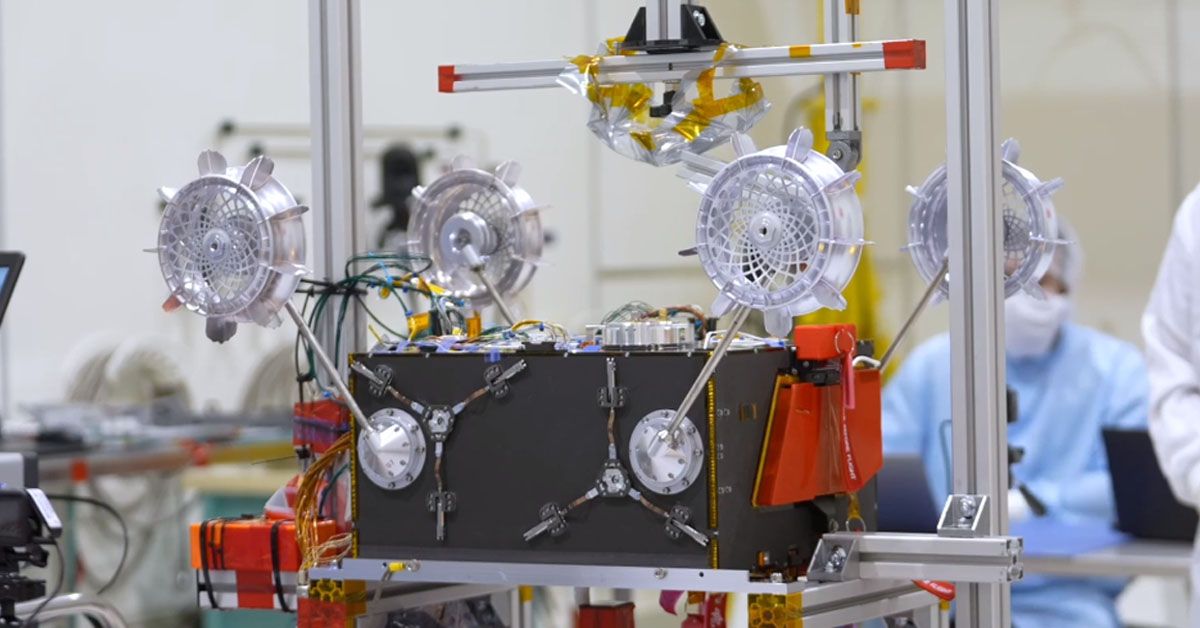Amid this flurry of Mars exploration, a unique mission is being planned: the Martian Moons eXploration (MMX) mission. MMX has set its sight beyond Mars, on its mysterious moons, Phobos and Deimos.
Developed by the Japan Aerospace Exploration Agency (JAXA), in collaboration with the German Aerospace Center (DLR) and the French National Center of Space Studies (CNES), the mission aims to understand the origins of these moons.
Germany's DLR and France's CNES are designing a unique rover, the IDEFIX, for this mission. It's a small robot that will explore the surface of Phobos.
The world is eager to see what IDEFIX will find. But do you ever wonder, what it takes to prepare such a rover for a journey to another planet's moon?
Overview of Current Missions
Right now, a lot is going on at Mars. We have a team of robots exploring this red planet for us. They're like our remote science labs, busy uncovering the secrets of Mars.
These machines come in different shapes and sizes and are experts in different tasks. Some are rovers that rove around on the Martian surface, while others are orbiters that circle Mars, capturing data from high above.
A total of eleven missions are currently in operation, all functioning to give us a more detailed understanding of Mars. Their explorations reveal information about the planet's geology, atmosphere, and potential for life.

Among these robotic missions, a little whirlybird named Ingenuity deserves a special mention. Have you ever tried flying a drone? Imagine doing that on Mars!
That's what Ingenuity is, the first helicopter on another planet. It's not easy flying on Mars. The atmosphere is thin, just 1% of Earth's.
It's like trying to fly at three times the height of Mount Everest! Yet, Ingenuity has managed to make several flights, capturing images and data that rovers can't get.
Understanding the Martian Moons eXploration (MMX) Mission
The MMX mission is setting its sights on a new frontier – the moons of Mars. But why are we interested in these tiny moons? Well, it's a puzzle that scientists have been trying to solve for a long time.
These two moons, named Phobos and Deimos, have odd shapes like potatoes. They look more like asteroids than moons. This has led to an interesting question: Are Phobos and Deimos native moons of Mars, or are they asteroids that got trapped by Mars' gravity?
The MMX mission hopes to find answers to these questions by investigating the moons directly.

Planning a space mission is not a one-country job. It requires collaboration and expertise from different corners of the world. The MMX mission is a shining example of such teamwork.
The Japan Aerospace Exploration Agency, or JAXA, is leading the mission. But they are not alone. They have teamed up with the German Aerospace Center (DLR) and the French National Center of Space Studies (CNES).
Together, they are combining their technological prowess to make the MMX mission a success.
IDEFIX: The Phobos Rover
The star player of the MMX mission is a small rover named IDEFIX. This little robot is the brainchild of the teams at DLR and CNES. They're working together to build a rover that can survive the harsh conditions on Phobos.
IDEFIX is currently being assembled and tested at the CNES site in Toulouse, France. The expected completion date is by the summer of 2023. So, we are not too far from seeing IDEFIX start its journey!

Building a space rover is like packing a suitcase for a long trip, but instead of clothes, you need scientific instruments. DLR and CNES are making sure IDEFIX has everything it needs.
The rover will carry tools like a radiometer and a Raman Spectrometer, provided by DLR. These instruments will help measure the temperature and identify the minerals on Phobos.
CNES has contributed to the navigational cameras that will guide the rover. Each of these instruments has a crucial role in helping IDEFIX fulfill its mission.
Structure of the MMX Spacecraft
Picture the MMX spacecraft as a complex puzzle made of three crucial pieces: the propulsion module, the exploration module, and the sample return capsule. The propulsion module is like the engine room of a ship. It's what moves the spacecraft through space.
Next, the exploration module is the command center, packed with technology to study Phobos and Deimos. This is where our hero, the IDEFIX rover, is housed.
Lastly, the sample return capsule is like a treasure chest, designed to bring back valuable samples from Phobos to Earth.

When MMX arrives at Mars, IDEFIX will have a big job to do. Its mission is to explore the surface of Phobos, the larger of the two moons, for three months. The little rover will study interesting spots on the moon, capturing images and collecting data.
It's like a detective, looking for clues about Phobos' origin. While it won't land on Deimos, the spacecraft will map and study this moon from a distance.
Rover Testing and Connection to MMX Spacecraft
Building a space rover is one thing. Making sure it can survive the journey and work in space is another. That's why IDEFIX is undergoing a series of rigorous tests known as qualification tests. Think of these as the final exams before the rover can graduate to space travel.
The tests check if IDEFIX can handle the shaking of the launch and the harsh conditions on Phobos, which is a cold, airless world. The results will ensure that IDEFIX is ready for its big adventure.
While in space, IDEFIX needs to stay connected to the MMX spacecraft. This is where the Mechanical and Electrical Connection and Support System (MECSS), provided by DLR, comes in.

MECSS is like the umbilical cord for the rover, providing power and a secure attachment to the spacecraft. CNES, on the other hand, has supplied the communication system. This system is vital for the spacecraft and the rover to talk to each other and share information. With these systems in place, IDEFIX is well-equipped for its journey.
The MMX mission extends beyond the scope of a single nation or rover. It embodies a remarkable narrative of worldwide collaboration, highlighting the efficacy of joint efforts in space exploration.
Through the combined endeavors of Japan, Germany, and France, these nations are actively pushing the frontiers of our understanding regarding the solar system, with a specific focus on unraveling the mysteries surrounding Mars' captivating moons, Phobos and Deimos.
Sources: dlr.de













